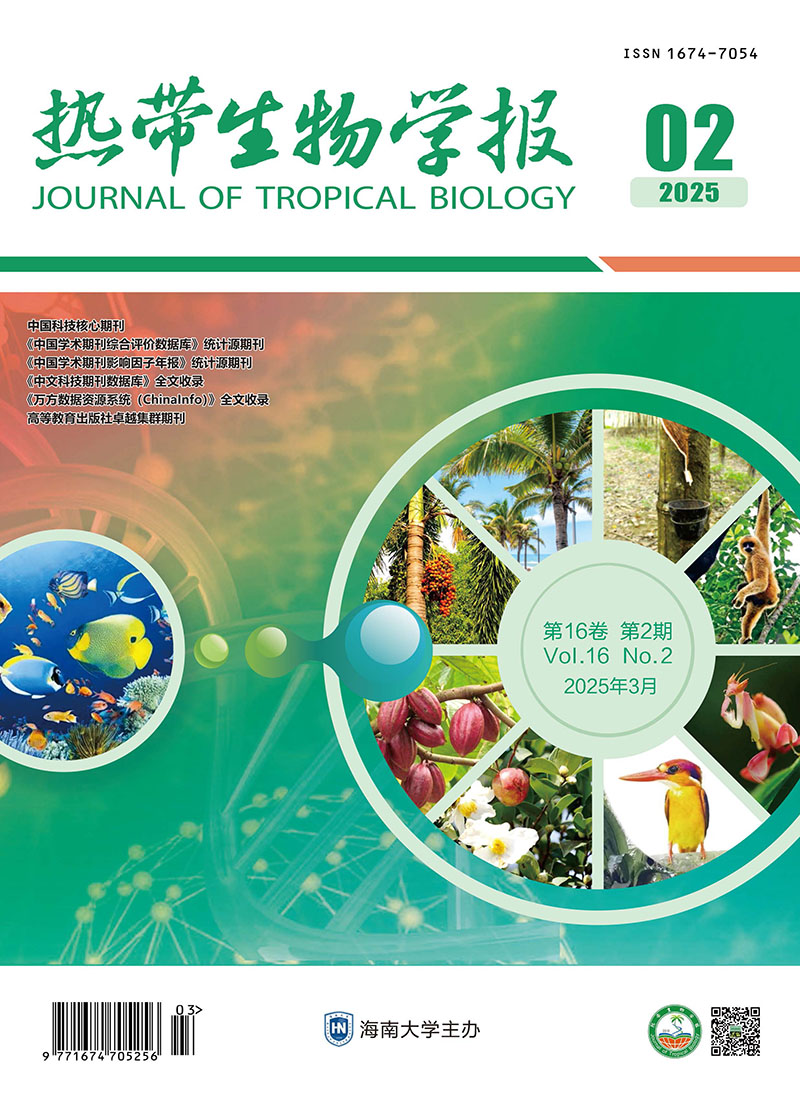|
[1]
|
DUPONNOIS R, GARBAYE J. Mycorrhization helper bacteria associated with the douglas fir-laccaria laccata symbiosis:effects in aseptic and in glasshouse conditions[J]. Annales des Sciences Forestières, 1991, 48(3):239-251. |
|
[2]
|
FITTER HA, GARBAYE J. Interactions between mycorrhizal fungi and other soil organisms[J]. Plant and Soil,1994, 159(1):123-132. |
|
[3]
|
POOLE EJ, BENDING GD, WHIPPS JM, et al. Bacteria associated with Pinus sylvestris-Lactarius rufus ectomycorrhizas and their effects on mycorrhiza formation in vitro[J]. The New Phytologist, 2001, 151(3):743-751. |
|
[4]
|
DUPONNOIS R. Bacteria helping mycorrhiza development[M]. Microbial Activity in the Rhizoshere, Berlin, Heidelberg:Springer, 2006:297-310. |
|
[5]
|
ZENG Yingjie, YANG Huirong, WU Xiaoling, et al. Structure and immunomodulatory activity of polysaccharides from Fusarium solani do7 by solid-state fermentation[J]. International Journal of Biological Macromolecules, 2019,137:568-575. |
|
[6]
|
JIN Zhaoxia, LI Dandan, LIU Tianyi, et al. Cultural endophytic fungi associated with Dendrobium officinale identification, diversity estimation and their antimicrobial potential[J]. Current Science, 2017, 112(8):1690-1690. |
|
[7]
|
张萍.铁皮石斛内生细菌研究[D]. 海口:海南大学, 2012. |
|
[8]
|
国家药典委员会.中华人民共和国药典[M]. 第一部.北京:中国医药科技出版社, 2015:92. |
|
[9]
|
王凤忠,王东晖.石斛[M]. 北京:中国农业科学技术出版社. 2015:127. |
|
[10]
|
张智,林秀莲,李璐,等.惠州龙眼树上铁皮石斛仿生态栽培技术[J]. 园艺与种苗, 2021, 41(02):10-11. |
|
[11]
|
罗天雄,杨福孙.石斛附生宿主槟榔微生物分离鉴定及优势真菌拮抗关系[J/OL]. 分子植物育种, 2023:1-18. |
|
[12]
|
王晓鸣.海南特有种华石斛菌根生物学研究[D]. 海口:海南大学, 2017. |
|
[13]
|
安忠琦.金钗石斛内生细菌的分离及抑菌活性研究[D]. 贵阳:贵州师范大学, 2017. |
|
[14]
|
HAM SH, YOON AR, OH HE, PARK YG. Plant GrowthPromoting microorganism Pseudarthrobacter sp.NIBRBAC000502770 nhances the growth and flavonoid content of geum aleppicum[J]. Microorganisms. 2022;10(6):1241. |
|
[15]
|
索云凯.解钾菌的分离筛选及对水稻田土壤钾释放研究[D]. 大庆:东北石油大学, 2021. |
|
[16]
|
PARK JH, BOLAN N, MEGHARAJ M, NAIDU R. Concomitant rock phosphate dissolution and lead immobilization by phosphate solubilizing bacteria(Enterobacter sp.)[J]. Journal of Environmental Management. 2011 Apr; 92(4):1115-20. |
|
[17]
|
YOON, JJ and KIM YK.“Degradation of crystalline cellulose by the brown-rot basidiomycete Fomitopsis palustris.” Journal of microbiology, 2005, 436:487-92. |
|
[18]
|
焦振泉,刘秀梅. 16s rRNA序列同源性分析与细菌系统分类鉴定[J]. 国外医学(卫生学分册), 1998(01):14
-18. |
|
[19]
|
GLASS N L, DONALDSON G C. Development of primer sets designed for use with the PCR to amplify conserved genes from filamentous ascomycetes[J]. Applied and Environmental Microbiology, 1995, 61(4):1323-1330. |
|
[20]
|
胡亚强.新蚜虫疠霉真菌共生细菌及其互作研究[D]. 杭州:中国计量大学, 2018. |
|
[21]
|
路福平,李玉.微生物学实验技术[M]. 中国轻工业出版社, 2020:73. |
|
[22]
|
马敏芝.黑麦草内生真菌生物学、生理学及其抑菌特性研究[D]. 兰州:兰州大学, 2009. |
|
[23]
|
尚晓静,侯瑞,徐芳玲,等. 2株蓝莓溶磷内生真菌的筛选、鉴定及溶磷效果评价[J]. 江苏农业科学, 2022,50(20):246-252. |
|
[24]
|
王笠,沈建华.混合涂片革兰氏染色法鉴别细菌[J]. 科技创新导报, 2018, 15(24):79+81. |
|
[25]
|
乔志伟,张永杰,谢梅芳.黔中黄壤溶磷细菌溶磷特性及对碳循环基因的影响[J/OL]. 河南农业科学:1-11,2023. |
|
[26]
|
孙建光,张燕春,徐晶,等.高效固氮芽孢杆菌筛选及其生物学特性[J]. 中国农业科学, 2009, 42(06):2043-2051. |
|
[27]
|
盛下放,黄为一.硅酸盐细菌NBT菌株解钾机理初探[J]. 土壤学报, 2002(06):863-871. |
|
[28]
|
CANTWELL BA, MCCONNELL DJ. Molecular cloning and expression of a Bacillus subtilis β-glucanase gene in Escherichia coli[J]. Gene, 1983, 23(2):211-219. |
|
[29]
|
姜晓宇,高菊生,徐凤花,等.水稻种子内生细菌多样性及其分泌植物生长素能力的测定[J]. 微生物学报,2013, 53(3):269-275. |
|
[30]
|
苗永美,苗翠苹,于庆才.枯草芽孢杆菌BBs-27发酵液性质及脂肽对黄色镰刀菌的抑菌作用[J]. 生物技术通报, 2023, 39(9):255-267. |
|
[31]
|
桑建伟,杨扬,陈奕鹏,等.内生解淀粉芽孢杆菌BEB17脂肽类和聚酮类化合物的抑菌活性分析[J]. 植物病理学报, 2018, 48(3):402-412. |
|
[32]
|
杨晓燕,王钰鑫,叶伟伟,等.枯草芽孢杆菌对几种植物病原真菌的抑菌活性[J]. 工业微生物, 2018, 48(6):32-38. |
|
[33]
|
陈相波.新蚜虫疠霉(虫霉目)共生细菌多样性研究[D]. 杭州:中国计量学院, 2014. |
|
[34]
|
XU HB, TSUKUDA M, TAKAHARA Y, et al. Lithoautotrophical oxidation of elemental sulfur by fungi including Fusarium solani isolated from sandstone Angkor temples[J/OL]. International Biodeterioration&Biodegradation,126, 2018:95-102. |
|
[35]
|
WALLEY FL, GERMIDA JJ. Failure to decontaminate Glomus clarum NT4 spores is due to spore wallassociated bacteria[J]. Mycorrhiza, 1995,6(1):43-49. |
|
[36]
|
XAVIER LJC, GERMIDA JJ. Bacteria associated with Glomus clarum spores influence mycorrhizal activity[J]. Soil Biology and Biochemistry, 2023, 35(3):471-478. |
|
[37]
|
PAKVAZ S, SOLTANI J. Endohyphal bacteria from fungal endophytes of the Mediterranean cypress(Cupressus sempervirens) exhibit in vitro bioactivity[J]. Forest Pathology, 2016, 46(6):569-581. |
|
[38]
|
|
|
[39]
|
黄挺,党俊杰,陈洪满,等.生物有机肥中解磷菌和固氮菌的筛选与鉴定[J]. 广西科技大学学报, 2023,34(1):92-97
+111. |






 DownLoad:
DownLoad: